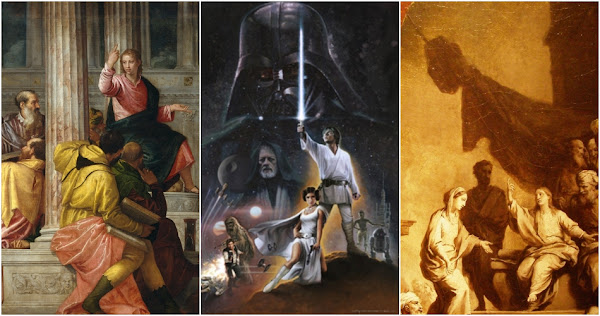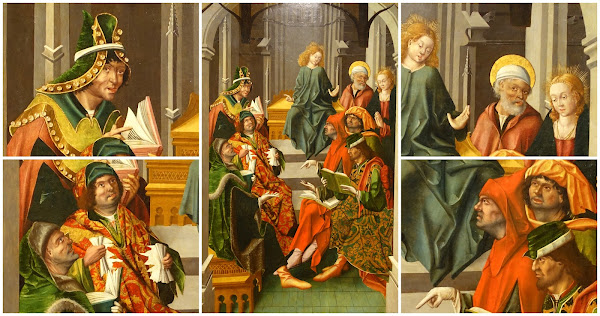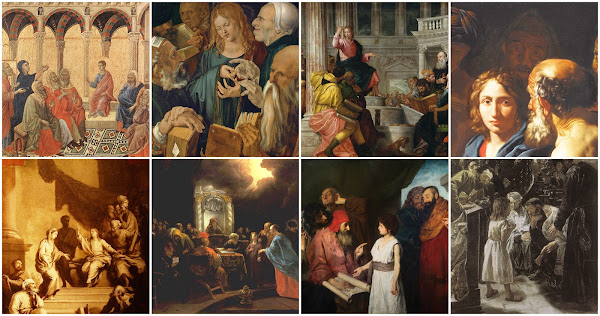(Part 5) The targets of Hamlet's 3.2 ironic allusion to Luke 2:46-52

~~~~~~~~~~~~~~~~~~~~~~ INDEX OF POSTS IN THIS SERIES: https://pauladrianfried.blogspot.com/2023/01/index-hamlet-in-32-as-boy-jesus-lost.html ~~~~~~~~~~~~~~~~~~~~~~~~~~~~~~~~~~~~~~~~~~~~~~~~ As previously suggested in this series (especially Part Four),[1] Hamlet’s subtle allusion [2] to the boy Jesus among the temple elders [3] is an ironic allusion, perhaps deeply ironic, rich and complex. But who is the target of this irony, and who is aiming it? AIMED BY HAMLET AT ROSENCRANTZ Rosencrantz had been sent to tell Hamlet that his uncle is angry and his mother is upset that Hamlet angered his uncle. So Hamlet jokes that he amazed and astonished his mother Gertrude, like Jesus did his parents and the temple elders. Eager to please king and queen, Rosencrantz may not get the joke. (More irony.) BY HAMLET, AT HIMSELF Hamlet may be aware that as a revenger, perhaps called to his task by heaven and hell [4], he is no Jesus among temple elders. BY HAMLET, AT MOTHER & UNCLE Hamlet


